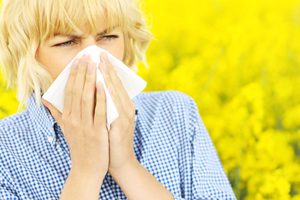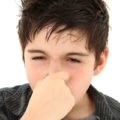
Mountain cedar, also known as ashe juniper, is a common cause of allergy sufferers' sneezing, itchy eyes and runny noses from December through February.
In North Texas, the cold and wet weather experienced earlier this month helped put a damper on mountain cedar pollen counts. Now, however, the sunny weather and southerly winds are blowing pollen up from Hill Country, triggering allergies for many in Texas.
Earlier this week, the pollen count was 1,643 grains per cubic meter in Dallas, which is the highest pollen count of both this season and last. San Antonio recorded a pollen count of 6,410 earlier this week, and last January recorded a count of 22,670, proving that San Antonio is not the place to go if you suffer from cedar allergies.
"If you're allergic to mountain cedar, don't go to the Hill Country to get away from it," allergist Susan Bailey told the Star-Telegram. "Go north or east. Whatever you do, don't go south."
So how do you know if you're suffering from cedar fever? Common symptoms include a sore throat, facial discomfort, fatigue, mild headache, partial loss of smell and the sensation of ear plugging, in addition to the usual allergy signs of sneezing, sniffling and tearing. Pay attention to when you experience symptoms. Do you typically suffer in December, January and February? Do your worst days coincide with times the pollen count in your neighborhood is especially high? If so, then you most likely have a mountain cedar allergy.
Here are some things you can do to minimize your symptoms:
- Bathe pets: Give your pets a bath once a week to reduce your allergies, even the animals that live indoors. Their fur easily collects pollen, so it's helpful to remove it often.
- Change your filter: Change out your air conditioning filter regularly, and make sure you're using a high energy particulate air (HEPA) filter to keep the pollen away.
- Clean your home: Keeping your home clean can actually help your allergies. Dust surfaces with a damp cloth and vacuum the floors at least once a week for the best possible results.
- Remove cedar: If you have cedar trees in your yard, it might be worth removing them and replacing them with elm or oak so you don't have to suffer as much every year.
- Shower and change: Take frequent showers and change your clothes, especially after you've been outside. This will help remove pollen that might be clinging to your hair, and it will ensure that you don't unwittingly spread the allergen around your home.
- Stay indoors: "It's kind of unfair," Fort Worth allergist Robert Rogers told the Star-Telegram. "The weather is really pretty but it's exactly the days we want to be outside that the pollen counts climb." Unfortunately, staying indoors will help reduce your allergic reaction more than anything else. Also remember to close all doors and windows and run your air conditioner when pollen counts are high.
- Take medicine: Use an over-the-counter antihistamine to control your symptoms when pollen counts are high. Nasal sprays can also work wonders, although allergists caution that the sprays take 4-5 days before becoming effective.
It's also important to consider whether your symptoms are really due to allergies. If you have a fever, then you most likely are suffering from a cold. Itchiness, on the other hand, is a strong sign of allergies. Allergies are also often hereditary, so if your parents are sufferers there's a higher chance that you are as well.
If you're looking for an allergy relief store or for more allergy information, contact Allergy Be Gone today!









